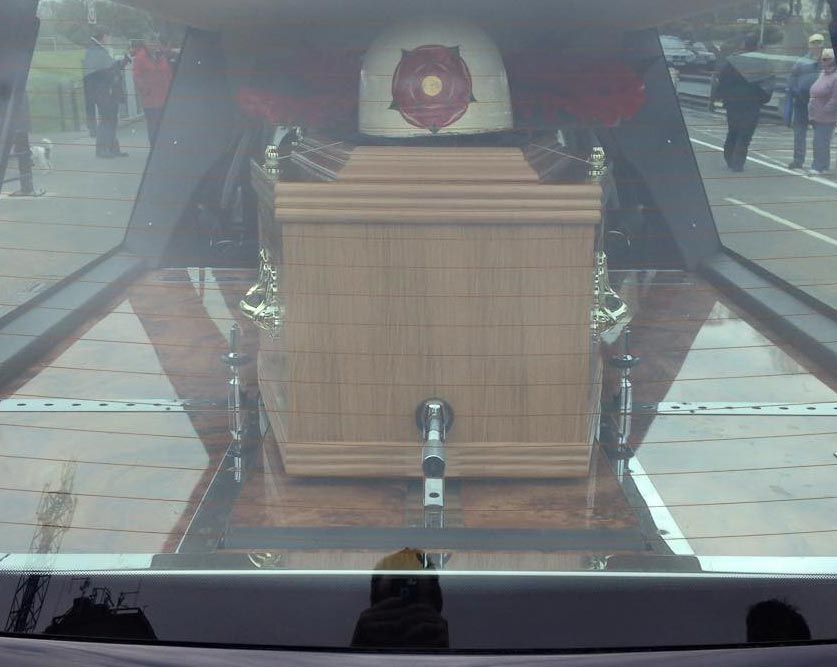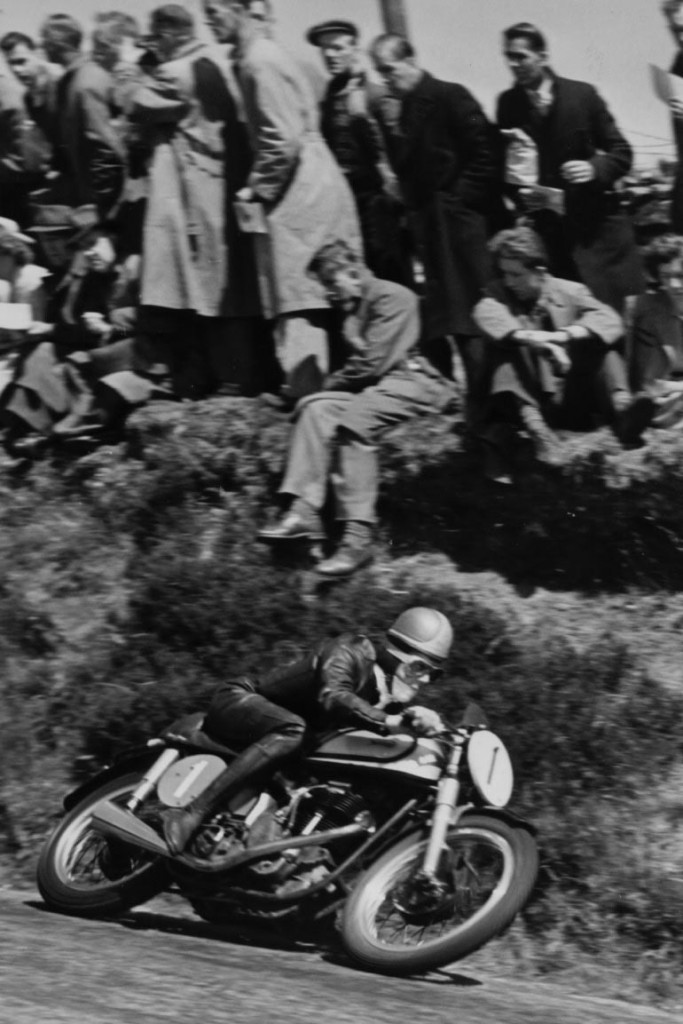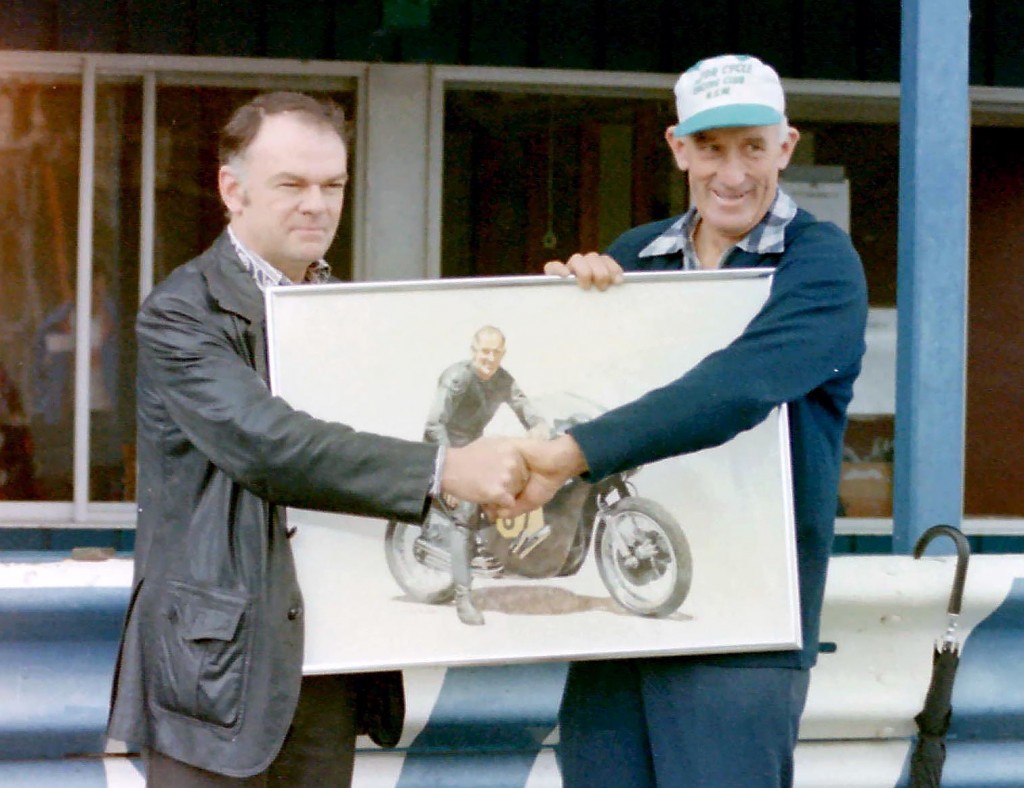Two More Legends Gone
Phil Hall on the recent passing of Geoff Duke and Eric Debenham
This last week has seen the passing away of two motorcycle road racing heroes. Both were from separate areas and both of them had an impact on very different levels. The differences are, however, of no importance when balanced against the similarities as I hope this article will show.
Geoffrey Ernest Duke was born in St Helens, Lancashire, in March 1923. After coming to the attention of the motorcycle racing fraternity for his exploits as a display rider (early stunt riding), he went road racing in the late 1940’s with a couple of excellent finishes in the Isle of Man TT races.
However, it was in the 1950’s that Duke hit his straps, reeling off SIX world championships and SIX wins at the Isle of Man TT. Riding for the “works” Norton team, Duke was unbeatable. The McCandless-designed “featherbed” frame made for superb handling and Duke’s classic, smooth riding style was a perfect match for British single.
However, by 1953 the Italian manufacturers were throwing down a serious challenge to the older, traditional British bikes and Gilera had arrived with an across-the-frame four cylinder DOHC engine that simply blew the Nortons away. It didn’t handle as well and placed much more demands upon the rider, but the power advantage was nearly always enough and, for the 1953 season, Duke turned his back on the local bike and signed for Gilera.
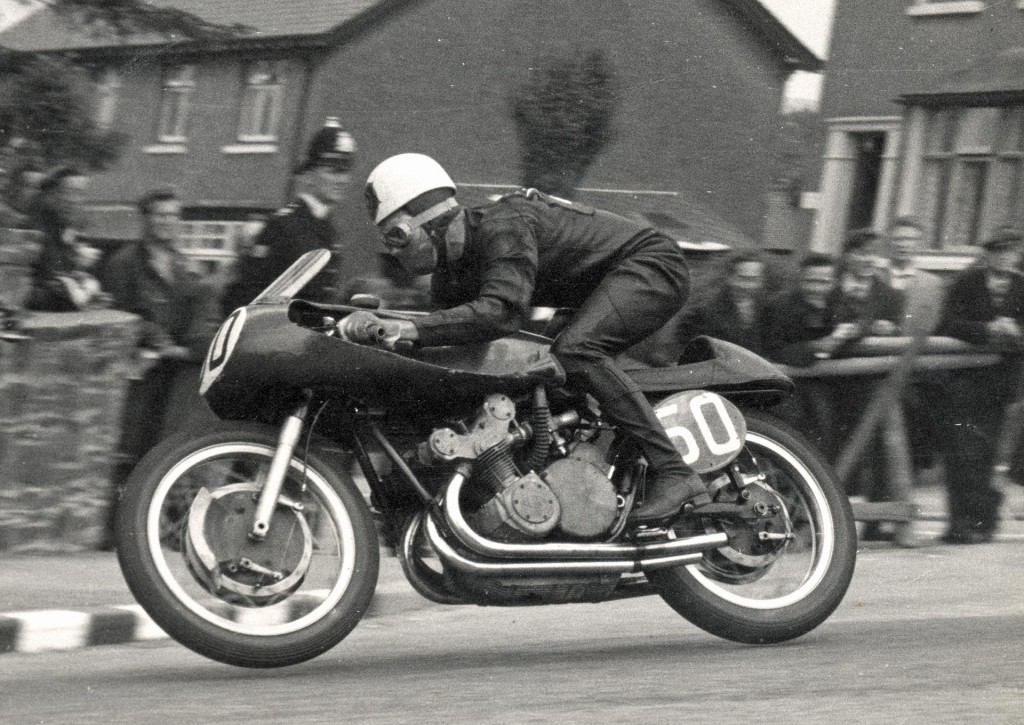
Duke won the next three 500cc title and only missed out on winning four straight when he was suspended by the FIM for supporting a riders’ strike for more money. However, three for Norton and three for Gilera still made six and made Duke the dominant rider of his era.
As well as being smooth and fast, Duke was also an innovator and it is to him that we owe the one-piece leather racing suit that is now mandatory in most forms of racing. It is said that he asked his local tailor to manufacture the suit after realising that the existing riding suits of leather and fabric were loose-fitting and impeded the rider when he was trying to go fast. Duke’s suit, on the other hand, was tight-fitting, streamlined and allowed the rider to “tuck in” on the bike much more effectively.
In 1959 Duke announced his retirement after having dominated the scene for nearly the whole decade. The torch was passed to another British rider, John Surtees and soon after to Mike Hailwood.
In retirement Duke first became a team owner, running ex-works Gileras for Derek Minter and John Hartle. After leaving the sport, he worked for a time in the motor trade but found his retirement niche in shipping services, instigating the Manx Line, the first roll-on, roll-off ferry services to the Isle of Man. He was named a Grand Prix legend by the FIM in 2002 and died peacefully at his home on the Isle of Man on the 1st of May, aged 92.
Geoff Duke came to Australia to race in the summer of 1955 and raced at a makeshift circuit at Gawler in South Australia where the temperature was 107 degrees Fahrenheit (that’s over 40 degrees Celsius) Here is a link to a Youtube video of that event.
[youtube id=”mYfzxWqhY-o” width=”560″ height=”315″]
In a decade dominated by modern-day gladiators like Rossi, Lorenzo, Marquez and Pedrosa it is good to remember those who have gone before and remind ourselves that Duke’s achievement of six world titles and six IoM wins is at least as meritorious as the exploits of our modern heroes. Indeed, in some ways it is probably more so given the rudimentary equipment, tyres and machinery that he used to achieve them, (to say nothing of the horrific lack of safety and loss of life that typified the era)
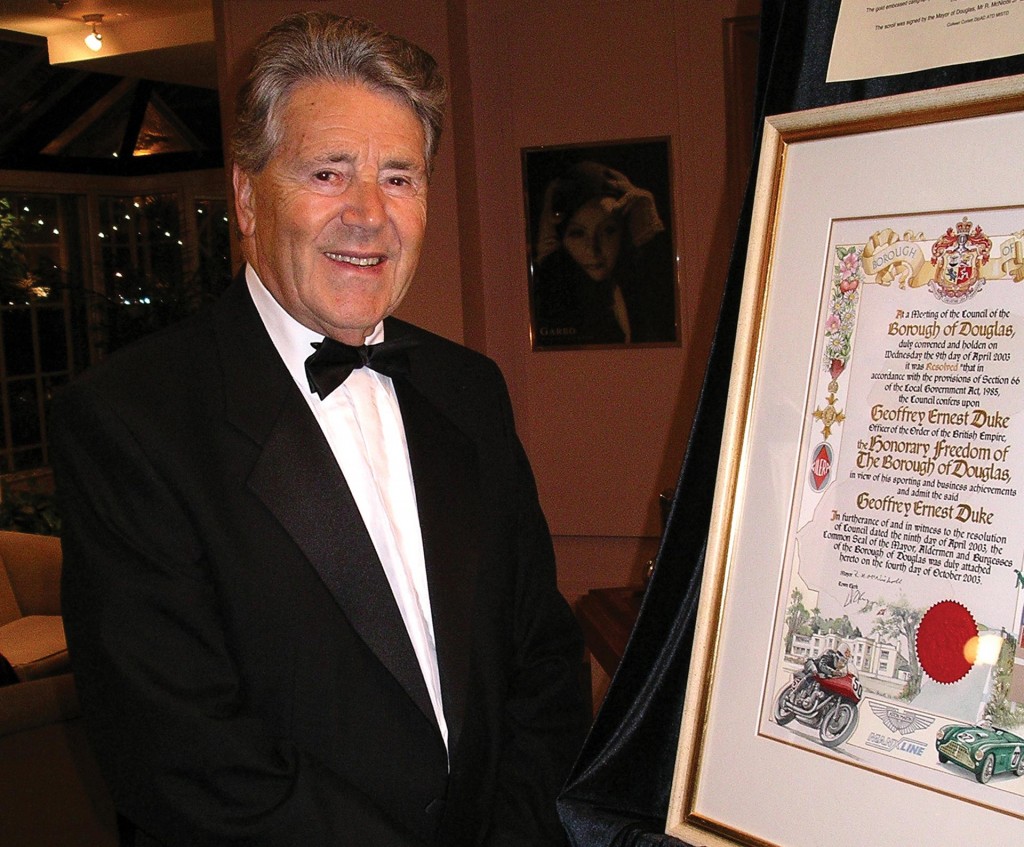
Just a few years after the birth of the great world champion, a little boy was born in Australia, half a world away. While he never scaled the heights of success that his illustrious contemporary did, his death last week at the age of 88 has deeply affected the motorcycle road racing fraternity in this country just as deeply.
Eric Robert Debenham, or “Debbo” as he came to be known, was an institution in Australian road racing in the 1970’s. Despite some research I have been unable to find a proper biography of Debbo so I am going to have to rely on personal remembrances instead.
Debbo shot to fame in the late 1960’s – early 1970’s when he began riding the legendary Corish Vincent. This bike, an amalgam of a hot-rod Vincent V-Twin engine and a much-modified Norton frame, was built by Ken Corish and was constantly updated to try and meet the challenges presented by the incoming horde of Japanese two stroke racers. Over a number of years the bike got faster and faster and, in 1968, Eric was clocked at 165mph (264km/h) down the straight at Bathurst. It was in that year that Debbo almost did the impossible, winning the Unlimited Grand Prix, only being denied by a loose nut in the float bowl of the carburettor while leading comfortably.
Eric continued to campaign the bike well into the mid-70’s where he always attracted the crowd but found that the bike was being increasingly out-gunned by big bikes like the Yamaha TZ750 two strokes. By the time that I saw him race for the first time in 1976 the bike was in the awkward position of being too new to be an historic bike but too old to be competitive in open company. So Debbo entered fewer and fewer open meetings and concentrated instead on terrorizing his club mates and riders from other clubs at the myriad of Five Way Club days that were so popular in the day.
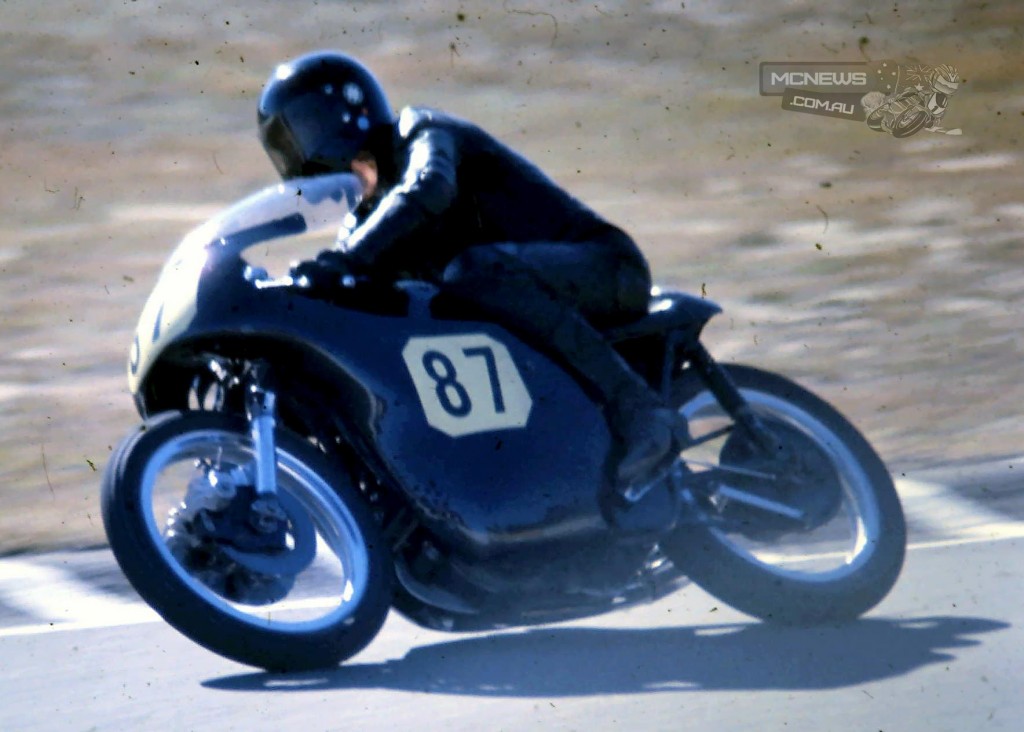
This is not to say that Debbo was a mean man, far from it, in fact. The term “laid back” could have been coined with Debbo in mind. Tall, skinny and angular he was unmistakable in the pits in his one-piece black, old-skool leathers and, even if you couldn’t SEE him you would always HEAR him. He had the loudest and most outrageous laugh and he laughed OFTEN. If something fun was happening anywhere in the pits, you could be pretty sure that the Debenham pit was the centre of it.
Universally loved and respected by his peers and his fellow racers, Debbo had a kind word for everybody and people came to the club days just so they could see him race the Vincent. The big, noisy, black #87 was the crowd’s favourite as was its rider.
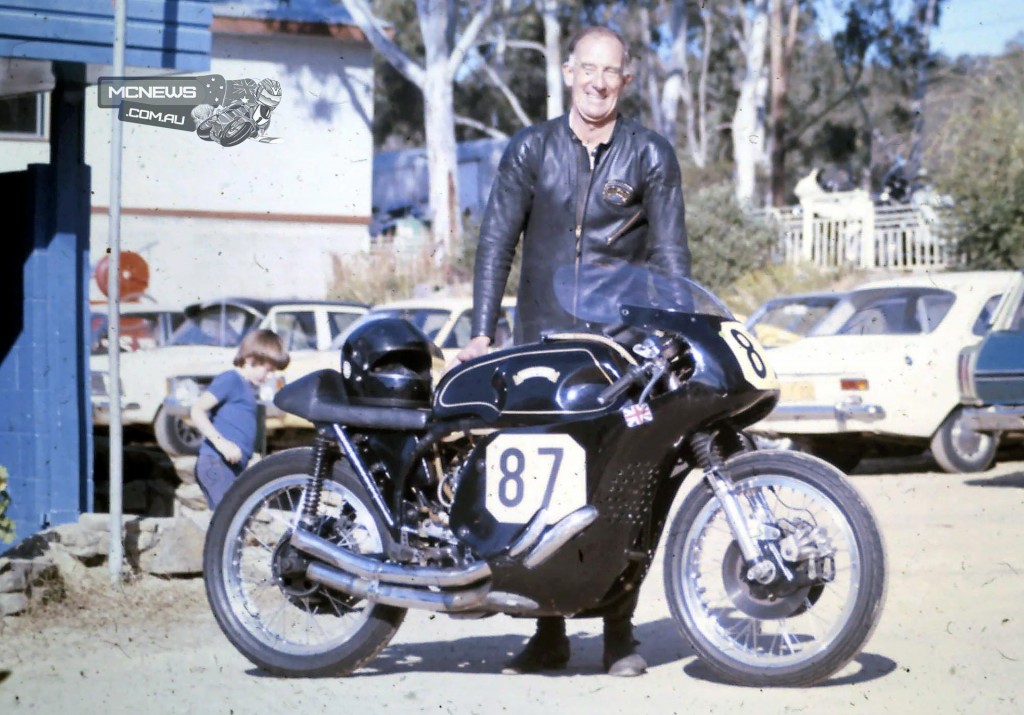
The last time I saw him race was at Amaroo in about 1984 at an historic meeting. John Surtess was the special guest and I went along because “Big John” had always been a hero of mine. And Debbo and the Vincent were there as well. I don’t remember how he went in the races but it didn’t really matter; just being around him was fun enough. I think it was at this meeting that he amazed spectators by doing laps of the pits on a BMX bike with a #87 on it. He’d have been 61 years old.
In the early 00’s (07, I think) I attended an Oran Park commemorative dinner and I was fortunate to be seated at the same table as Debbo. He was older, a little stooped and obviously feeling his age, but the sparkle was still in the eye, the funny stories were just as funny and the laugh was just as infectious.
I count it a privilege to have known Debbo and to have watched him race the wonderful #87 Corish Vincent. I can tell you that the bike is now back in the possession of the Corish family and that Ken’s grandson, Aidan, is himself involved in racing, racing a speedcar in speedway; the car is painted black and the number is 87.
I am sorry that, these days, I am attending more funerals than weddings, but I guess that is just the passage of time. I never met Geoff Duke but that doesn’t lessen my respect. And Debbo never won a World Championship but the respect is the same. The racing world is poorer for the passing of these two racing heroes.
